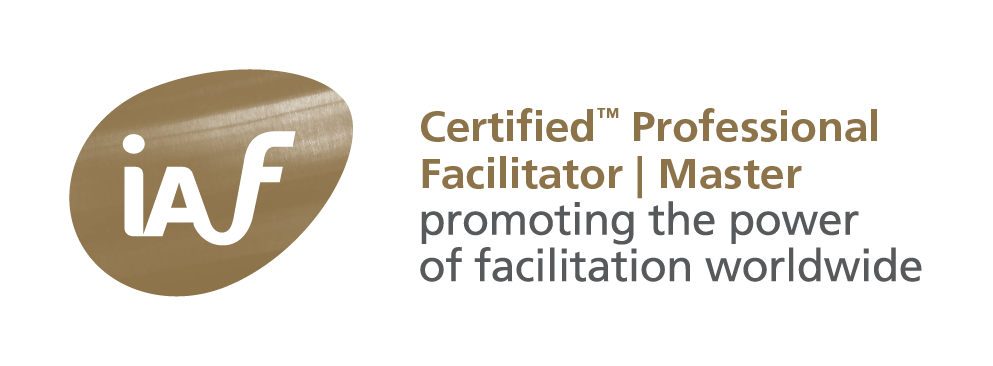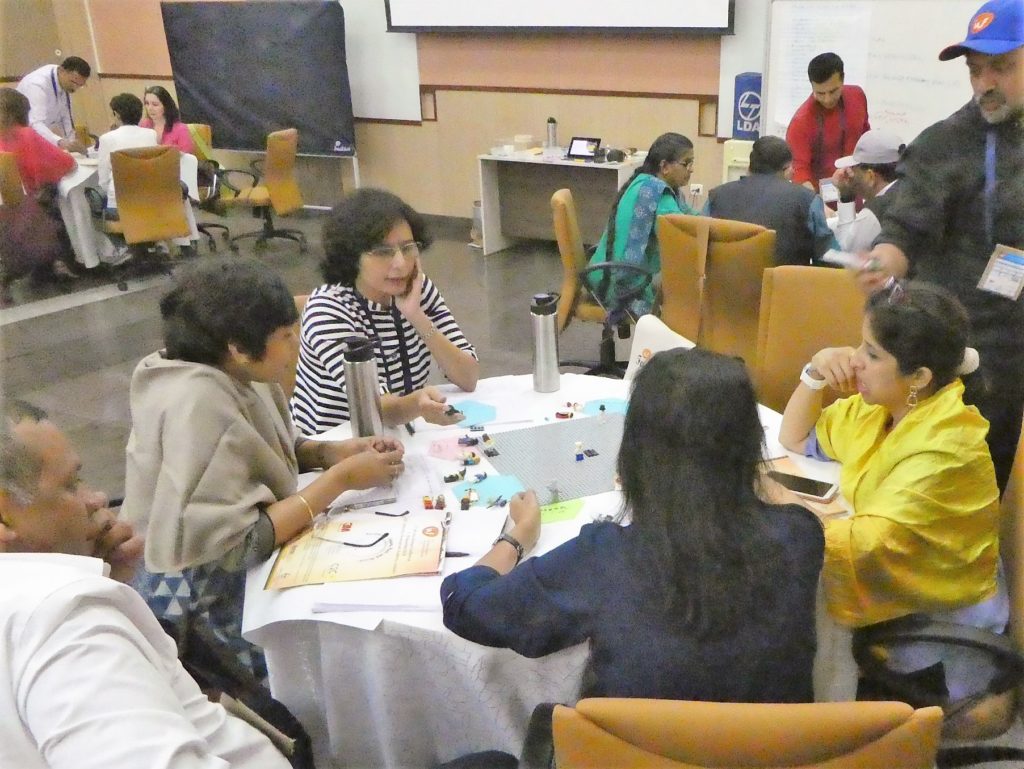
I’ve based my approach on three starting point:
- “toolmaker metaphor”
- “relationship classifies the content”
- a metaphor projects the structure of concrete experiences on the same structure of abstract classes
First on metaphor – literally “to carry over” or “transport”. (see Lakoff) We express ourselves using metaphor. Parts of speech are metaphors. A metaphor, like “time flies like an arrow”, uses the structure of concrete experience (an arrow flies like an arrow) and projects it on the same structure of abstract classes. “Time” (and space) is an abstraction of your concrete experiences. More on this at the end of this post.
Please note, that I’m using the metaphor of projection – an arrow is “projected”, at a target or goal -, “carrying over”, to “make my point”. In fact, every sentence has the structure of “object verb subject“, like “time flies like an arrow”.
This ties in with the axiom by Watzlawick about the relationship classifying the content of a message. Meaning is being conveyed through the relationships between object and subject. And not by the words. Words don’t contain meaning. You “create” or “invent” or “construct” meaning out of the relationships between the elements. In this text, the words; in the workshop the figures.
The third starting point highlights this. (See Ortony) You “work out meaning”, by using the elements at your disposal. You’re giving or hand over your message to others, who use it as elements to work out both your intended meaning and their understanding of the relationships. In doing so, you induce, realize or invent what the message means to you. While conversing, the meaning happens. All behaviour is communication and all communication is behaviour. More on this at the end of this post.
Together, they show “how you know what you know”, or the main aspects of radical constructivists. Reality equals community.
The technique involves using “clean communication”, or “appreciative inquiry”, or “unassuming dialogue” to figuring out meaning. By now, I assume you’ll understand that we use metaphors both literally (“the content”) as well as figuratively (“the meaning”).
In the workshop I use figures, cards or objects, to work around the assumption, that you know what your words mean. You don’t know, until you’ve been told. By yourself.
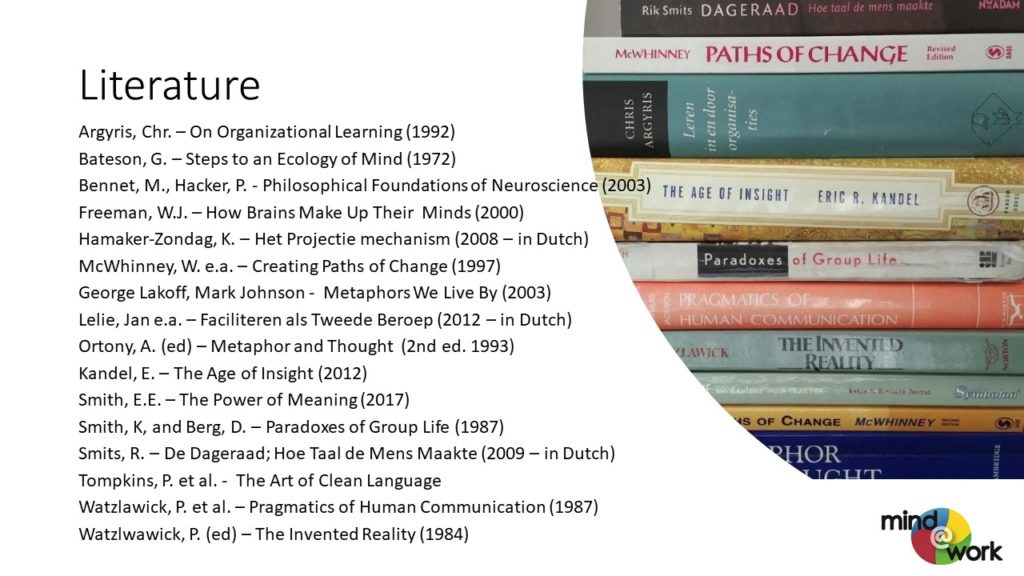
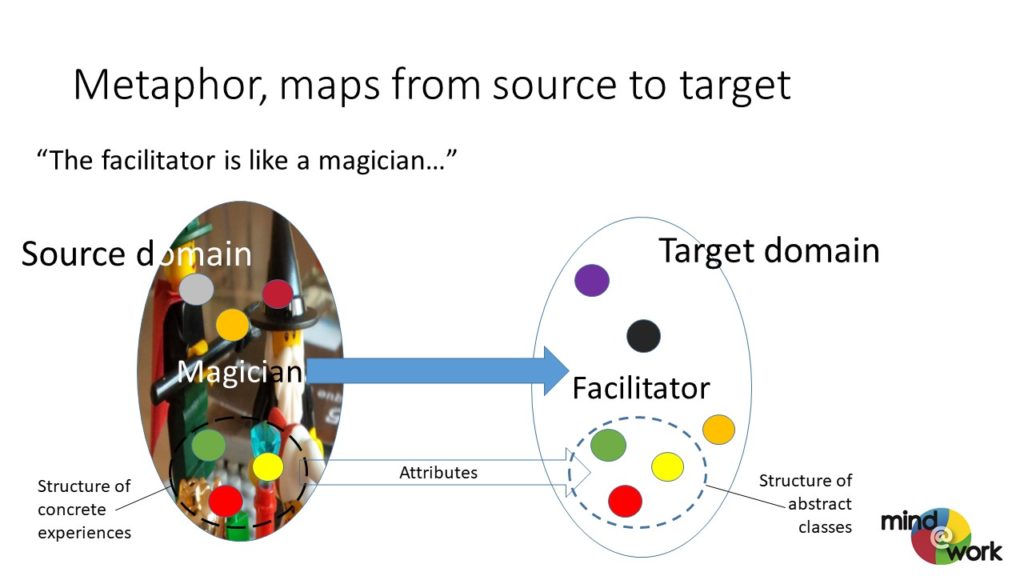
A client once told me, “a facilitator works like a magician, …”. We all have experienced the wizard, magician or sorcerer. He or she tricks and surprises you, using your assumptions. Some of the attributes of a wizard are projected on the concept of a facilitator. Some of the attributes are not present in the metaphor. In my view, “a facilitator is like a pilot or guide…” “says more”. (This is an example of the “Conduit metaphor”, words don’t say anything. I did.)
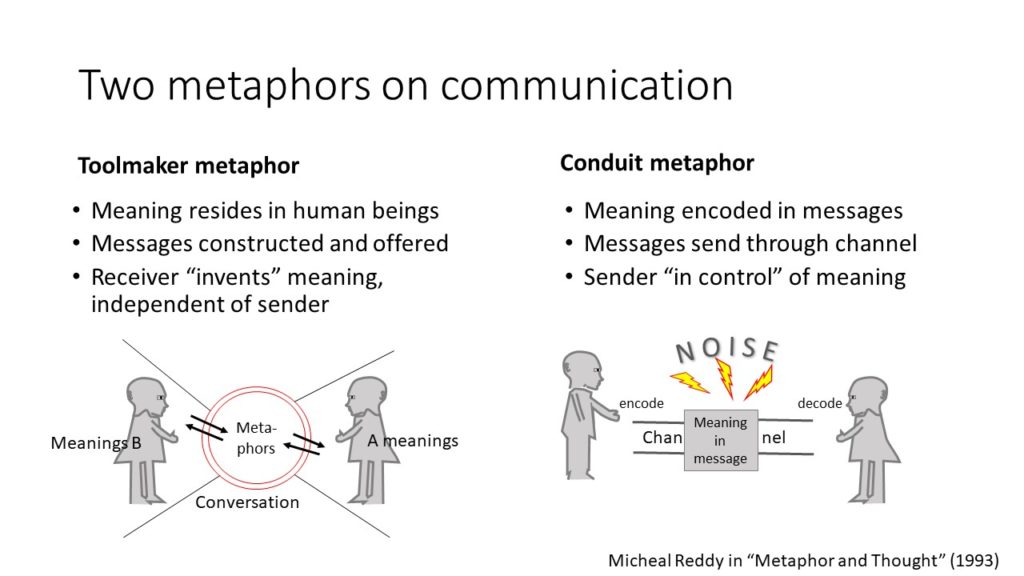
The Conduit metaphor is currently the dominant metaphor in communication. The sending party assumes (s)he encodes a message clearly into words, which are carried over through a channel. The receiving party decodes the message and will understand it, as it has been send. The only thing that can happen is noise in the channel, so SPEAK CLEARLY, USING CAPITALS. This way of communication works great in simple situations, which can be managed through “command and control”. The dominance of this metaphor has grown because of the use of printing, machines and computers.
The Toolmaker metaphor depends on conversations or dialogue to “make meaning happen”. The participants engage each other and exchange metaphors and “invent” or “induce” or “realize” “what is meant”. The toolmaker’s way takes more time than the Conduit. It makes up for this loss in being able to work in volatile, unclear, complex and ambiguous situations. As it relies more on images, use of videos in internet will contribute to its return to importance.
Funny enough, language was invented as a by-product of invention of tools. But that’s another story.

